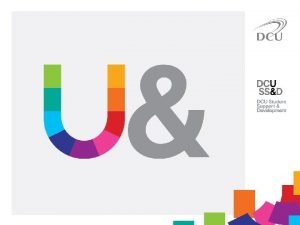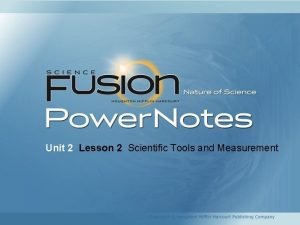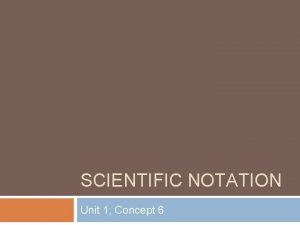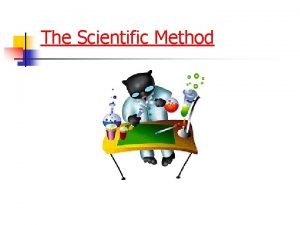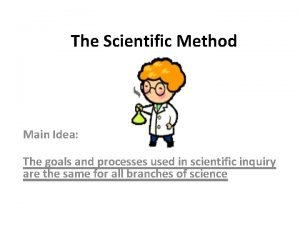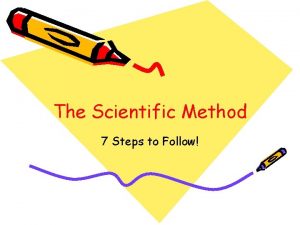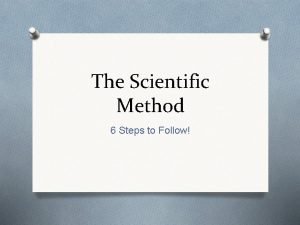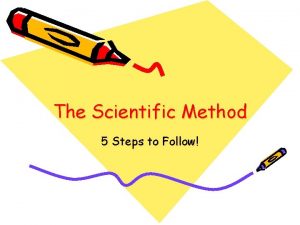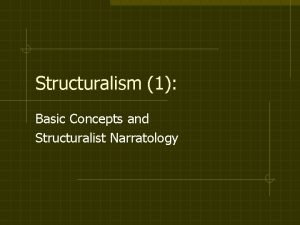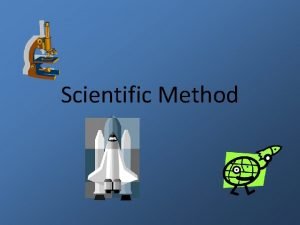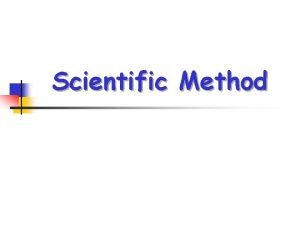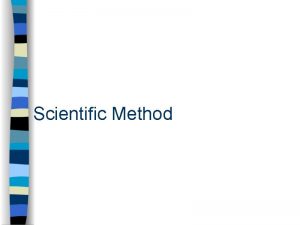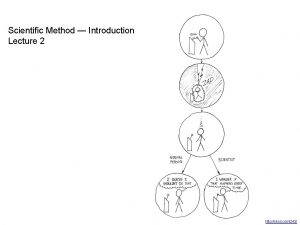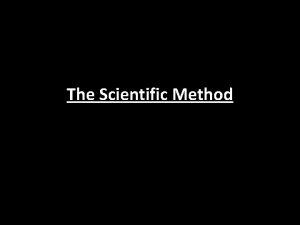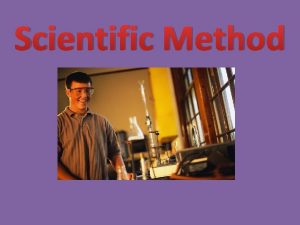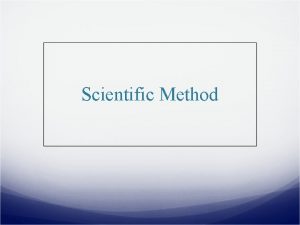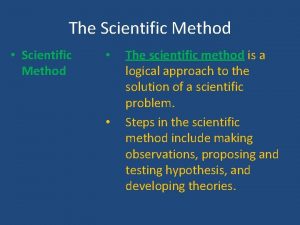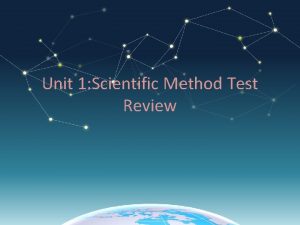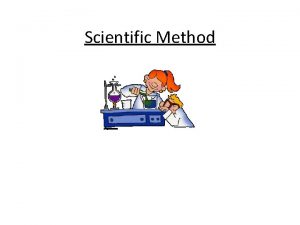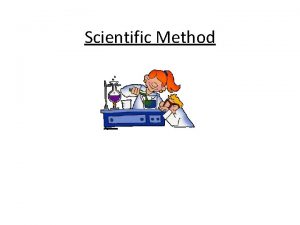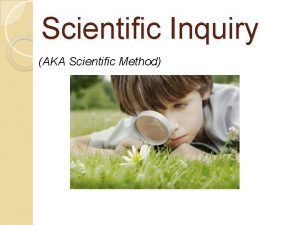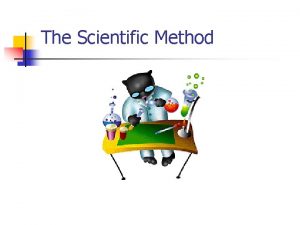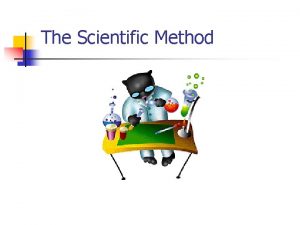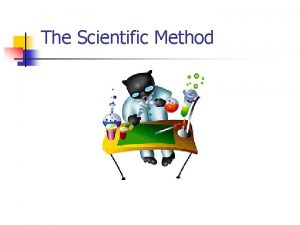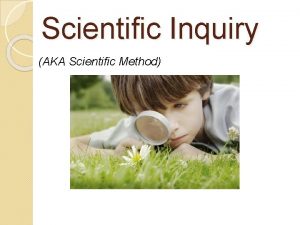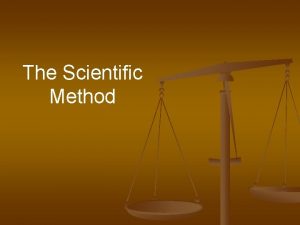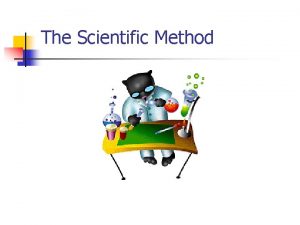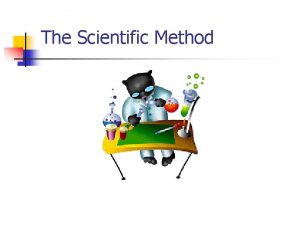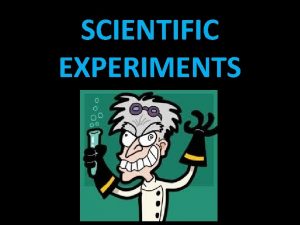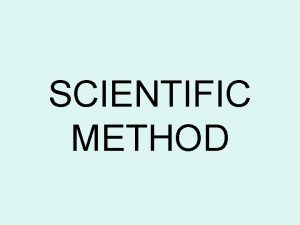Scientific Method Review Unit 1 Scientific Method Review





























- Slides: 29

Scientific Method – Review Unit 1

Scientific Method - Review � � � Hypothesis Controlled Experiment Data Conclusion Theory Law

Scientific Method - Review

Scientific Method 1. Which is included in the definition of a scientific theory? A. A well- tested explanation of natural events B. A statement of what most people believe to be true C. A description of natural events based on casual observations D. A conclusion agreed upon by people without experimentation

Scientific Method 2. What must be true of theories before they are accepted by the scientific community? A. Practical applications must be suggested. B. Similar explanations must be in existence. C. They must be supported by empirical data. D. Experiments must be conducted to refute the idea.

Scientific Method 3. Why are ethics important in science? A. Provides interesting topics to study B. Keeps research within moral boundaries C. Allows controversial issues to be resolved D. Reflects the values of everyone in the community

Scientific Method 4. A scientist develops a new strain of corn. She then receives a large grant from the government to determine how well the new corn grows. She is also responsible for choosing where the new strain of corn will be grown and collecting data on its growth and yield. When the study is completed, she will also write the final report. Which is the most likely source of bias in this experiment? A. The scientist grows the corn in fertile soil. B. The scientist does not grow any corn because of drought. C. The scientist may take too much time to finish the report. D. The scientist is making conclusions about a product that she developed.

Scientific Method 5. Which is an example of applied science? A. Formulating the cell theory B. Developing new medicines C. Generating hypotheses on the origin of life D. Discovering the law of independent assortment

Scientific Method 6. Why is a peer review important to the acceptance of a theory? A. Determines when theory can be modified B. Confirms that theory is scientifically sound C. Explains how theory can be proven in the future D. Evaluates if theory can be applied to other explanations

Scientific Method 7. Which statement is true of the ethical parameters used by scientists? A. Used only for studies involving new medicines B. Used only for research projects involving animals C. Used to prevent researchers from paying their subjects D. Used to prevent unnecessary suffering or harm to all organisms

Scientific Method 8. A bird- watcher records the movement of migrating birds. In which part of the scientific process is the birdwatcher participating? A. Controlling variables B. Experimenting C. Observing D. Hypothesizing

Scientific Method 9. Based on your observations, you suggest that the presence of water could accelerate the growth of bread mold. This is A. A conclusion B. A hypothesis C. An experiment D. An analysis

Scientific Method 10. A student sees a bee on a flower. The student wonders how the bee finds flowers. This student is displaying the scientific attitude of A. Creativity B. Curiosity C. Open-mindedness D. Skepticism

Scientific Method 11. A theory A. Is always true B. Is the opening statement of an experiment C. May be revised or replaced D. Is a problem to be solved

Scientific Method 12. How do scientific theories compare to hypotheses? A. Theories are the same as hypotheses B. Theories unify a broad range of observations and hypotheses C. Hypotheses combine the ideas of several theories to explain events D. Hypotheses are the dominant view among scientists

Scientific Method - Data 13. What is the mode in this set of data? A. 4 B. 8 C. 15 D. 20

Scientific Method - Data 14. 425 milligrams equals how many grams? 42. 5 g B. 4. 25 g C. 0. 425 g D. 0. 0425 g A.

Scientific Method - Data 15. 250 centimeters equals how many meters? 25. 0 m B. 2. 50 m C. 0. 25 m D. 0. 025 m A.

Scientific Method - Data 16. Which would be the best conditions for algae to undergo photosynthesis? A. Temperature around 20°C with a light intensity of 50 lux B. Temperature around 40°C with a light intensity of 250 lux C. Temperature around 60°C with a light intensity of 125 lux D. Temperature around 100°C with a light intensity of 250 lux See next slide

Scientific Method – Data – 16

Scientific Method - Data 17. What is the strongest base listed on the table ?

Scientific Method - Data 18. At what temperature in ºC does water boil?

Scientific Method - Data

Scientific Method - Data 19. Which beaker is the student’s control? 20. At what distance from the light source was the greatest number of bubbles produced?

Scientific Method - Data

Scientific Method - Data 21. What factor is the student testing? 22. What would be an appropriate control for this experiment? 23. Write a hypothesis for this experiment.

Scientific Method - Data 24. What are four common metric units used to measure length?

Scientific Method - Data 25. At approximately what temperature in ºC is room temperature?

Scientific Method - Data 26. MODIFIED TRUE OR FALSE: According to the graph, the rate of photosynthesis in shade and sun plants decreases and then levels off as light intensity increases.
 Unit 6 review questions
Unit 6 review questions Information gathered during an experiment
Information gathered during an experiment Unit test unit test review algebra 2
Unit test unit test review algebra 2 How is a scientific law different from a scientific theory?
How is a scientific law different from a scientific theory? Scientific literature review
Scientific literature review Scientific notation review
Scientific notation review Unit 2 lesson 2 scientific notation
Unit 2 lesson 2 scientific notation Significant zeros pogil answers
Significant zeros pogil answers Characteristics of symposium
Characteristics of symposium Chapter review motion part a vocabulary review answer key
Chapter review motion part a vocabulary review answer key Ap gov final review
Ap gov final review Nader amin-salehi
Nader amin-salehi What is inclusion and exclusion
What is inclusion and exclusion Narrative review vs systematic review
Narrative review vs systematic review 7 steps of the scientific method
7 steps of the scientific method 7 steps of the scientific method
7 steps of the scientific method Thalidomide
Thalidomide Scientific method brainpop
Scientific method brainpop What are the 7 steps of the scientific method
What are the 7 steps of the scientific method What are the 6 steps of the scientific method?
What are the 6 steps of the scientific method? Five steps of the scientific method
Five steps of the scientific method How does the scientific method work
How does the scientific method work Structuralist
Structuralist Using science skills
Using science skills Examples of problems using scientific method
Examples of problems using scientific method Examples of scientific method
Examples of scientific method Scientific method steps
Scientific method steps M&m experiments with scientific method
M&m experiments with scientific method Scientific method learning objectives
Scientific method learning objectives Xkcd scientific method
Xkcd scientific method




